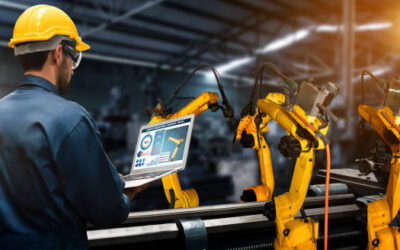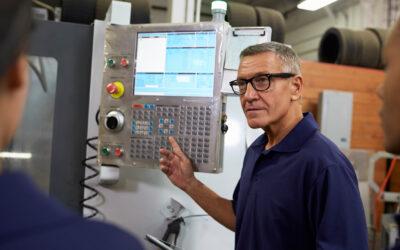The past decade has seen a dramatic transformation in manufacturing. Deemed Industry 4.0, the focus on technology, automation, interconnectivity, data, and analytics has redefined the way that goods are designed, produced, and delivered to customers.
However, with so many technologies available, it’s not always clear where to invest. Small and medium manufacturers, especially, have achieved mixed results after implementing automation technology. And those that have been burned by failed projects in the past are hesitant to try again.
While this fear is understandable, those who stand still in a rapidly evolving market risk falling behind those that continue to improve.
Instead, manufacturers should take a holistic view of the entire production process and develop an Automation Strategy based on a shared vision of success.
Creating a shared vision: setting the foundation for future investments
Technology does not operate in a vacuum. And, on its own, technology cannot move an organization toward its desired results.
Ad-hoc and standalone investments don’t consider the wider context of the organization. While they may promise to reduce cost, improve efficiency, or increase throughput, they lack strategic fit within the rest of the production environment and, as a result, often fail to live up to expectations.
Rather than rushing out to purchase the latest technology, manufacturers should take a step back and articulate a strategic vision that sets the foundation for future decision-making. By defining what success looks like before an automation project begins, manufacturers can align future investments with the goals of the business.
A strategic vision ultimately comes from senior leadership. But, as with all strategic initiatives, it’s important to seek out ideas and input from the various functions and departments involved with the manufacturing process.
Once in place, the vision should be made available to all team members in an easily accessible format. This way, employees can look back to the vision when making decisions, initiating new projects, and designing new solutions.
Developing an Automation Strategy: taking a holistic view of production
The strategic vision sets the stage for the Automation Strategy, which in turn determines the technologies that the manufacturer will invest in.
As the missing link that connects the business strategy, the manufacturing strategy, and the technology itself, the Automation Strategy serves as the why behind the what. It allows manufacturers to take a continuous, process-driven approach to innovation across multiple projects and investments while ensuring everyone is moving toward the same outcome.
By taking a holistic view of the entire production process, the Automation Strategy makes it possible to identify where technology will have the most impact, understand how new machines affect processes up and down the line, and determine which technologies are best aligned with the goals of the business.
Consider, for example, two organizations. The first views its factory as a showpiece to investors, customers, and the public. It wants to be seen as cutting-edge and innovative, and the equipment deployed in the facility reflects this strategic vision.
The second, on the other hand, emphasizes high volume and low margins. It’s interested in speed, throughput, defect rates, and other performance metrics. Since no one from outside the organization sees the factory, it is less concerned with the look of the equipment or the need to be viewed as a technological leader.
Given the differing needs of these two organizations, it’s clear that they will have different automation strategies.
Making things better: the benefits of a strategic approach to automation
A well-defined Automation Strategy that aligns with the manufacturer’s vision holds the design and implementation teams accountable. New ideas can be tested and measured against the goals of the organization, and decisions can be made within a shared framework. Instead of looking solely at cost, manufacturers can better incorporate the value of a project into the decision-making process.
The vision also mitigates the risk of delays, budget overruns, and other disruptions while increasing the likelihood that a technology delivers on its promises. Further, manufacturers can evaluate if they are executing on their vision and are moving toward a predetermined set of goals. If not, they can quickly take steps to bring it back on track before straying too far from the original objectives.
Finally, a shared vision and defined Automation Strategy ensure that manufacturers retain control of their technology. Otherwise, they risk relying on the vision of equipment providers and becoming dependent on the products and solutions they already offer rather than what would be the best fit for their business.
Getting the most out of automation technology
While many manufacturers have struggled to benefit from the rise of automation technology, today’s fast-moving industry requires continuous improvement to remain competitive.
But before purchasing new technology and forcing it into the production facility, manufacturers should step back and take a holistic view of the entire organization. By starting with a shared vision, developing an Automation Strategy, and working with an experienced Automation Strategist, manufacturers can confidently invest in new solutions and implement the technology that moves them closer to their strategic objectives.
To learn more about developing an Automation Strategy and how manufacturers benefit from an Automation Strategist, download our recent white paper, The role of the Automation Strategist in manufacturing



